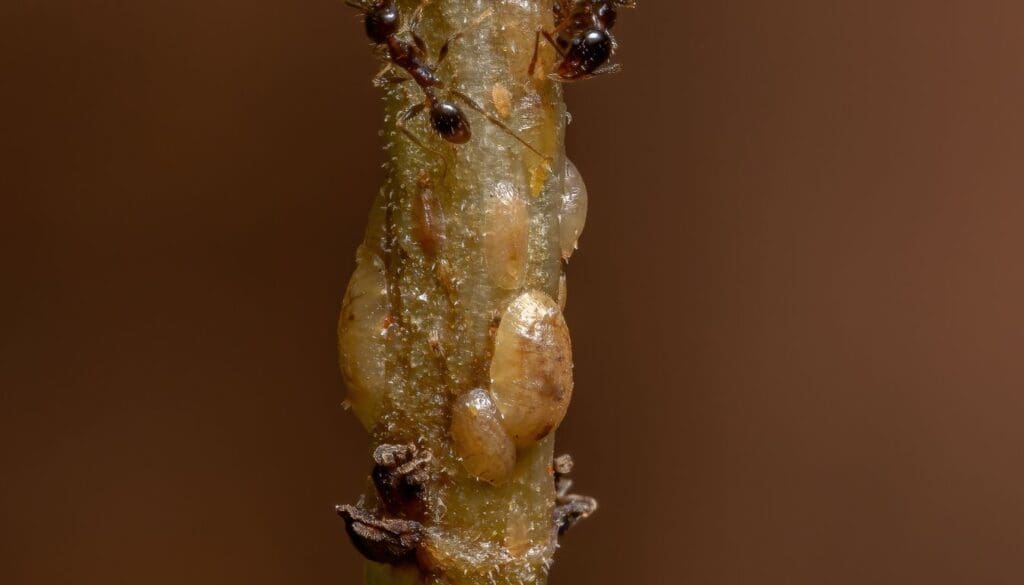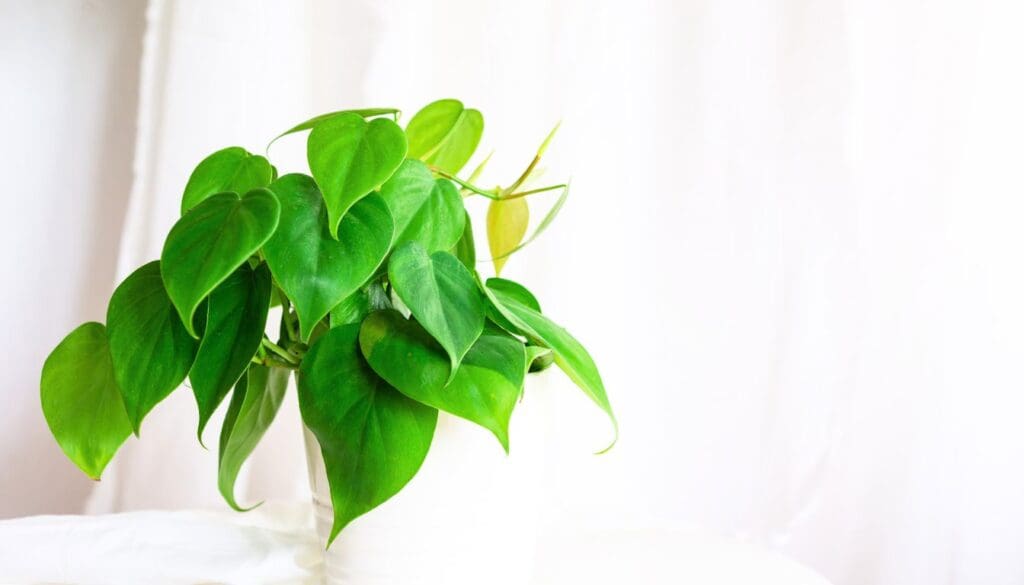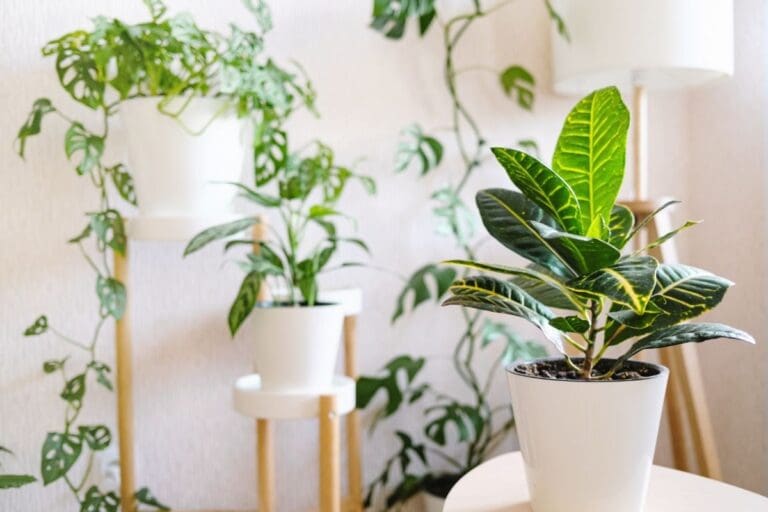Pests On Philodendron? Try This!
Philodendrons develop various problems if they get infested with pests. Pests can cause yellow or brown leaves, wilting, discoloration, and distorted growth if you don’t identify the problem on time. But how do pests reach your philodendron plant? How can you get rid of the bugs in your philodendron?
Philodendron will attract bugs if it is living under unfavorable conditions. To get rid of bugs, you must separate the plant from other houseplants and spray some diluted neem oil solution, insecticidal soap, or any chemical pesticide. Wiping the leaves with rubbing alcohol also works.
A healthy philodendron will never attract bugs. But if you don’t provide the right living conditions, the pests will get attracted to your philodendron.
Giving your philodendron excess water, high humidity, and poor ventilation will create the perfect environment where the pests will thrive.
However, if you can detect the pests early, there’s nothing to worry about, as you can easily remove them.
The first step to eliminate the bug is identification. So, let’s first learn to identify the bugs and then discuss 11 different solutions to eliminate them.

Please note: Simplify Plants is reader-supported. Some links in the post are affiliate links and I get a commission from purchases made through links in the post.
Common bugs in philodendrons
You must thoroughly inspect the plant if your philodendron loses its luster and looks dull, along with distorted foliage. There might be a pest infestation in your philodendron. Let’s look at a few common bugs that can infest your philodendron.
Aphids

Aphids are tiny pests but can create big problems in your philodendron.
Aphids are oval-shaped and 2 mm in size. Their colors can vary from green, yellow, red, brown, or black. These are found in groups, and they strike the plant’s new growth or reside underneath the leaves of the plant, so it becomes hard to detect them.
Aphids secrete a sticky liquid on leaves and stems called honeydew. They feed on the sap of the philodendron. A sign that your philodendron has an aphid infestation is that you’ll notice tiny white flakes on the plant’s stems and leaves.
Some other signs of an aphid infestation include yellow and deformed leaves. Aphids affect the growth of your philodendron and can make the plant look deformed.
Spider Mites
Spider mites are tiny pests that look like young spiders. You may notice spider mites in different colors on your philodendron.
It is hard to identify the spider mites as they are tiny, but one easy way to detect them is when you notice thin and silky web-like structures all over the plant. The spider mites pierce the leaves and cause discoloration or yellow leaves.
You will be able to spot spider mites if you use a magnifying glass. These bugs are found everywhere, such as the roots, leaves, soil, and stems of the philodendron.
You must eliminate these pests as soon as possible as they populate fast and affect all plant parts.
You will also notice a change in your philodendron’s appearance and discolored leaves.
Scales

If you notice a shiny glazing coating on your philodendron, your philodendron might be infested by scales.
There are two types of scales: soft scales and armored scales. These resemble tiny bumps that come in brown, gray, or black.
As the names suggest, armored scales have a hard cover that can save them from chemical pesticides, and soft scales have a wax coating that can be difficult to remove.
Scales secrete a sticky liquid, which is not easy to deal with.
Scales can pierce through your philodendron’s leaves, branches, and stems and feed on the plant sap, making it weak.
You will notice symptoms like yellow leaves, brown spots on the leaves, wilting, and stunted growth due to scale infestation on your philodendron.
Mealybugs

Mealybugs are tiny fluffy pests that resemble cotton and are often mistaken as fungus or mildew because of their appearance.
Mealybugs are oval-shaped and have different colors, such as brown or cream. The mealybugs suck on the philodendron’s sap and take all the nutrients out of the plant.
These pests can mostly be found on the undersides of the leaves of your philodendron.
If your philodendron has deformed and yellow leaves, leaf drops, or stunted growth, your plant might have a mealybug infestation.
Gnats

If you notice a group of small flies around your philodendron plant, these are most probably gnats that are tiny flies.
It is easier to identify the fungus gnats as they remain in groups and are dark-colored flies. These develop in the soil, so the flies will come out of the plant with a buzzing sound if you shake up the philodendron.
Fungus gnats affect the philodendron and wander around your house, especially in the kitchen, windows, or living areas.
The larvae infest and damage the roots by creating wounds and feeding on the soil fungi.
How do you get rid of bugs on philodendrons?
You should try eliminating the bugs from your philodendron as soon as possible, as these pests will not keep your plant healthy. These pests populate very fast and will cover the whole plant in no time.
First, you need to isolate your philodendron so that the pests cannot spread to the other houseplants in your house. You must prune the damaged leaves and branches, but don’t prune too much as that will shock the plant.
There are different ways to control these pests. While you can easily opt for chemical pesticides, we recommend the natural and organic ways that we will discuss in a while.
We recommend organic ways as those will not cause any harm to your plant and the environment.
Try to opt for pesticides that are meant for the houseplants only.
Running water
Try to eliminate as many pests as possible by washing the plant with running water. This might not eliminate all the pests, but it will eliminate many of them.
Do not overwater, and ensure that the water gets thoroughly drained from the soil. If the water doesn’t get drenched, the soil will remain moist and encourage bacteria or other diseases.
You can also handpick the visible pests without getting washed by the water. Remember to use gloves while doing this.
Water the philodendron during the day when the sun is out so that the soil can get dry. If you keep doing this for a few days, you will notice an improvement in your philodendron’s health.
Insecticidal soap
Insecticidal soap is nontoxic for your philodendron, so it is an excellent way of eliminating pests.
People don’t use insecticidal soap much after the arrival of chemical pesticides on the market. Now, people are concerned about the health of their plants and try to opt for organic options, so insecticidal soaps are coming back to the market again.
You can make your insecticide soap with the following steps:
- Take one tablespoon of liquid soap
- Take 4 cups of water
- Mix the liquid soap with water and pour the solution into a spray bottle
- Shake the mixture well
- Don’t make the mixture too strong, as it can dehydrate the philodendron
Spray this solution once a week if the pest infestation is not severe. Spray the solution when the temperature levels are low, and the light is medium.
If the pest infestation is severe, spray this mix on your philodendron after every few days. If the pest infestation is medium, you can spray the solution directly on the pests.
This solution will affect the pests by penetrating their membranes and suffocating them.
Rubbing Alcohol
You can get rid of the sticky pests by using rubbing alcohol on them.
You must make a mixture using 1 part alcohol with three parts water and apply this directly to the pests. This will help eliminate the pests if the infestation is severe.
Horticulture oils
A great organic way of treating philodendrons is using horticulture oils. You need to apply the soil after every few days to control the pests.
This oil suffocates the pests by stopping their feeding or clogging their breathing cycle. The horticulture oil is light and will not cause any damage to the plant as it will evaporate quickly.
The horticulture oils work better on bugs with soft bodies.
Don’t spray horticulture oils when the sunlight is too intense, or the temperature is too high, as it will stress the plant. You should not spray horticulture oils when the temperature is low, either.
You should avoid fertilizing your philodendron when it is affected by pests. The humidity level must not be very high as that will not let the oil evaporate naturally. This will be harmful to the philodendron.
Use light oil or oils labeled summer instead of dormant oils. Light oil will work better on soft-bodied bugs.
Neem oil

You can extract neem oil from the neem seeds, and these are very effective in getting rid of pests. Neem oil is slightly toxic and works excellent if you want to eliminate the pests.
Neem oil damages the hormones and brain of the bugs, due to which they fail to eat or mate. This leads to the demise of the bugs.
You must spray neem oil all over the plant and ensure that the oil reaches the undersides of the leaves as the pests reside more over there.
You can make a neem oil solution by mixing:
- 1½ teaspoon of neem oil
- 1 teaspoon of dish soap
- 1 liter of water
Spray it all over the philodendron. Keep doing this for a few days.
Don’t forget to wear a mask to avoid any headache or irritation. For better results, you can use cold-pressed neem oil.
Pyrethrum
You can use pyrethrin as a gentle botanical treatment against pests. You can spray this on your philodendron to paralyze the bugs and knock over the flying insects.
You can spray this or use the powder to dust once every few days. However, it is best to use this with another pesticide to eliminate the pests permanently.
Ryania
Ryania is a dried stem extract that comes in powder form and is combined with other chemicals.
You can dust this on your philodendron to control the pests. However, keep it away from your dogs and fish as it is toxic for them.
Sticky traps
To control the flying pests, you can use sticky traps.
You can make a trap by applying petroleum jelly on yellow cardboard, or you can buy one.
This trap will help you eliminate the flying bugs, but this is not the best method as it will not eradicate the insects.
Diatomaceous earth
You can use this to eliminate the pests as it cracks the bugs’ bodies, stops their movement, dehydrates, and eliminates them ultimately.
However, this must not be accessed by honey bees, butterflies, or other pollinators as it is poisonous for them.
Limonene/Linalool
If you want to eradicate the pests fast, you can use Limonene and Linalool.
These are poisonous and can paralyze the pests and eradicate them quickly.
Rotenone
Rotenone is used in chemical pesticides. This is very toxic for bugs but not for humans.
You can spray this once a week to remove the pests from your philodendron. However, you should not spray it very close to the plant as that will harm it.
Tips to prevent pests on philodendron

You can use these steps to prevent pest infestation on your philodendron.
- You must not overwater the philodendron as it will create the ideal environment for pests and cause fungal growth.
- Don’t expose the philodendron to direct sunlight or very high temperatures.
- You can handpick the bugs from the philodendron.
- Spray neem oil on your philodendron every month to prevent pest infestation.
- Clean the leaves of your philodendron after every few days.
- Keep a check on the philodendron and provide the right cultural conditions so that your plant remains healthy and doesn’t get infested by pests.
Ref: Wikipedia.
Recommended Garden Supplies
| Product Image | Our Recommended Gardening Supplies | Check Offers! |
|---|---|---|
Top Top
Top
Top
Top
Top
Top
Top
Top | rePotme Houseplant and Tropical Classic Potting Soil Mix | Check Offer On Amazon |
 Top
Top
Top
Top
Top
Top
Top
Top | Espoma Organic Indoor Plant Food | Check Offer On Amazon |
 Top
Top
Top
Top
Top
Top
Top
Top | GooingTop LED Grow Light 6000K Full Spectrum Clip Plant Growing Lamp | Check Offer On Amazon |
 Top
Top
Top
Top
Top
Top
Top
Top | Soil Moisture Meter | Check Offer On Amazon |
 Top
Top
Top
Top
Top
Top
Top
Top | Govee Hygrometer Thermometer, Bluetooth Enabled! | Check Offer On Amazon |
 Top
Top | LEVOIT Humidifiers for Large Room(Best For Plants) | Check Offer On Amazon |
 Top
Top
Top
Top
Top
Top
Top
Top | Upgraded DIY Automatic Drip Irrigation Kit, 15 Potted Houseplants Support | Check Offer On Amazon |
 Top
Top
Top
Top
Top
Top
Top
Top | Stainless Steel Heavy Duty Gardening Tool Set | Check Offer On Amazon |
 Top
Top
Top
Top
Top
Top
Top
Top | Bonide Insecticidal Soap | Check Offer On Amazon |
 Top
Top
Top
Top
Top
Top
Top
Top | Bonide 32 oz Spray Neem Oil for Organic Gardening | Check Offer On Amazon |
 Top
Top
Top
Top
Top
Top
Top
Top | Garden Safe Fungicide | Check Offer On Amazon |






